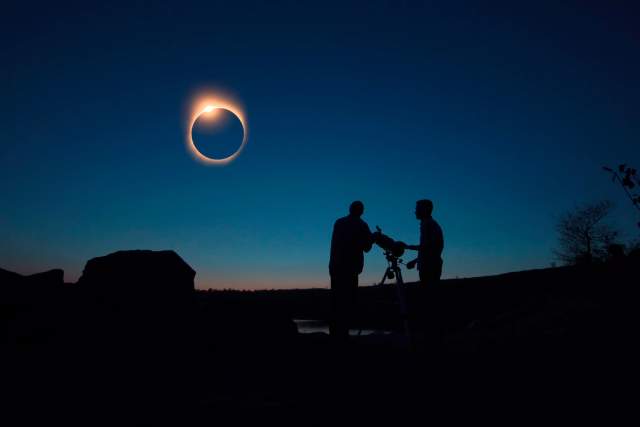If you’ve seen a full solar eclipse — not a 50% eclipse, not a 90% eclipse, not a 99.95% eclipse … but a 100%-totality full solar eclipse — then you know that it’s one of the most spectacular things nature can show you.
Enough people know by now that the April 2024 total eclipse that traveled from Mexico to Quebec became a very big deal for destination marketing organizations (DMOs). Anyone working at a destination in the path of the totality spent the months leading up to it planning, facilitating, and answering questions about the traveler experience.
At Simpleview, we have a special interest in DMO websites — so we wanted to know what impact the eclipse had on traffic patterns. This blog explores some of the DMO web industry datasets collected using the Simpleview Data Engine platform.
First, let’s just look at overall sessions.
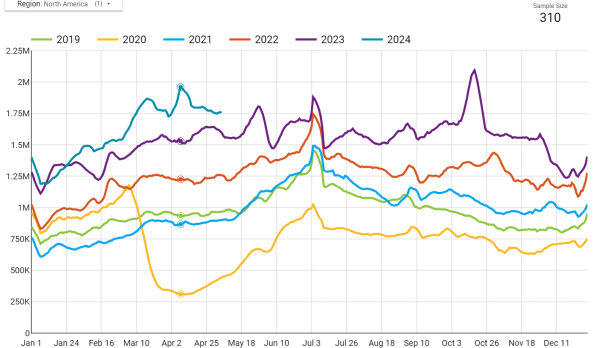
This chart, available in the Simpleview Insights Hub, shows daily sessions to over 300 North American DMO sites. First, you’ll note that 2024 has looked great so far, which is wonderful for the industry.
Next, you’ll note a significant (though not huge) peak at the dots, which are set on April 8 (the day of the eclipse). That was our highest traffic day of the year so far, and it produced a spike where spring-time DMO traffic usually takes a dip.
The prominence of this peak relative to its surroundings is fairly large, similar to that seen on July 4, typically the highest-trafficked day of the year on American DMO sites, and another one driven by a single quick spectacle.
When we break this traffic down by the topic of the landing page, we find that the impact was only felt on static “Events” content pages; even in event details, it does not show up prominently.
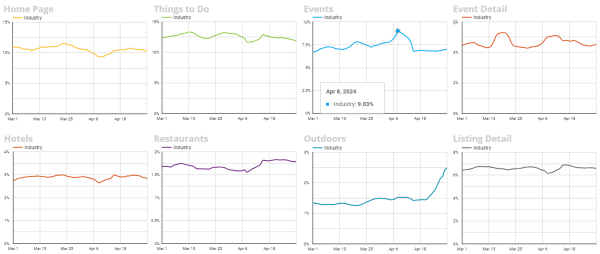
We also saw a small dip in average engagement time from sessions landing on “Events” pages, though not a drastic one. This is, again, normal for transient event traffic.
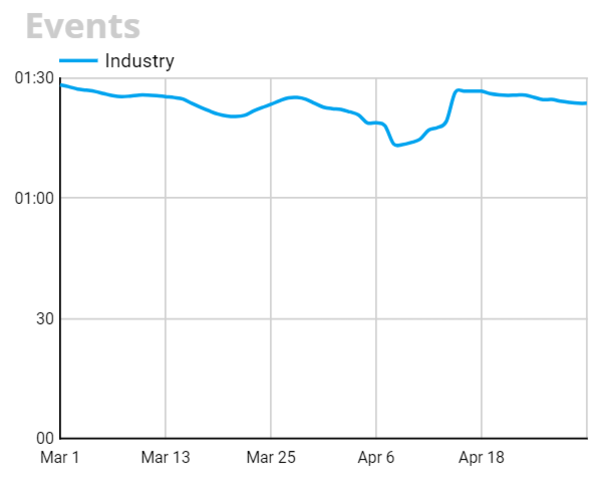
Let’s focus on “Events” pages only, and filter out the Western U.S. — since the totality did not reach there. We’ll also restrict our dates to April 5-8 (the full weekend leading to the eclipse). That lets us look more at where this traffic spike came from.
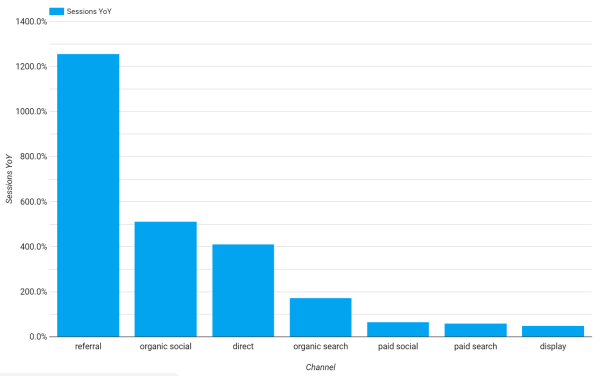
The channels that grew the most were all earned rather than paid. Referral traffic, up over 12 times since the year before, really grew — most likely stemming from news articles linking to the local DMO. Organic social, direct, and organic search traffic all put up huge numbers as well.
We can delve a little deeper into the near doubling of organic search with our database of DMO keyword activity from Google Search Console. The full table of keyword data contains almost 190,000 unique queries from 300 different DMO sites. When we filter it for only those keywords containing the word “eclipse,” those numbers drop to just 239 unique queries across 19 DMO sites, reflecting the fairly narrow path of the totality.
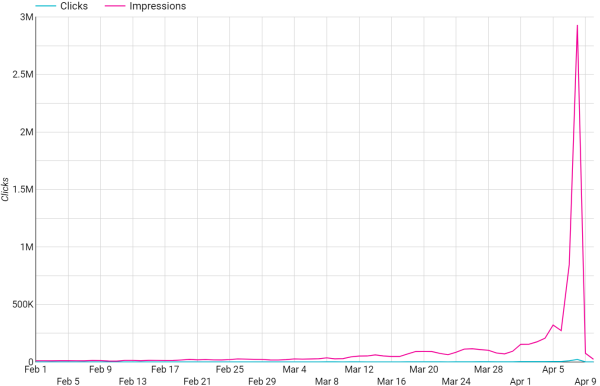
Most of the organic search activity happened only in the last week before the eclipse, and even then almost entirely on the actual day it happened. We are a procrastinating nation. There were far more impressions than clicks, with a click-through rate (CTR) well under one percent — even on April 8. This reflects that the vast majority of the searches were of the “zero-click” variety; i.e. users searched for the eclipse on Google but got all the information they needed from the search results page itself. This tends to happen with event-based searches.
So … What Does This Mean?
Even with a huge event like this that everyone knew about for years ahead of time, the vast majority of the total audience only tuned in at the very last minute. They tended to find what they needed (likely times and locations) by Googling the word “eclipse” and gathering the facts from the results page, without delving much further. But if they did land on a DMO site, it tended to be on social media and search-friendly static pages (as opposed to event details). While they didn’t spend a ton of time on those pages, they weren’t too quickly in and out either.
Next time you have a big, but quick event in your area, take these content-creation lessons to heart:
-
Make a good quality page with all the relevant facts you can think of that will engage users browsing for content, and get it up well in advance so it can establish itself in the ranking algorithms
-
As that date approaches, consider supplemental paid, display, and social campaigns to promote the content
-
Apply as much conversion rate optimization (CRO) expertise to the page’s design as possible — this is your chance to snag a few potential visitors or dedicated users for the future
Stay up to date on industry trends.
Subscribe to the Simpleview newsletter to get the latest blog posts delivered straight to your inbox.
Sign up